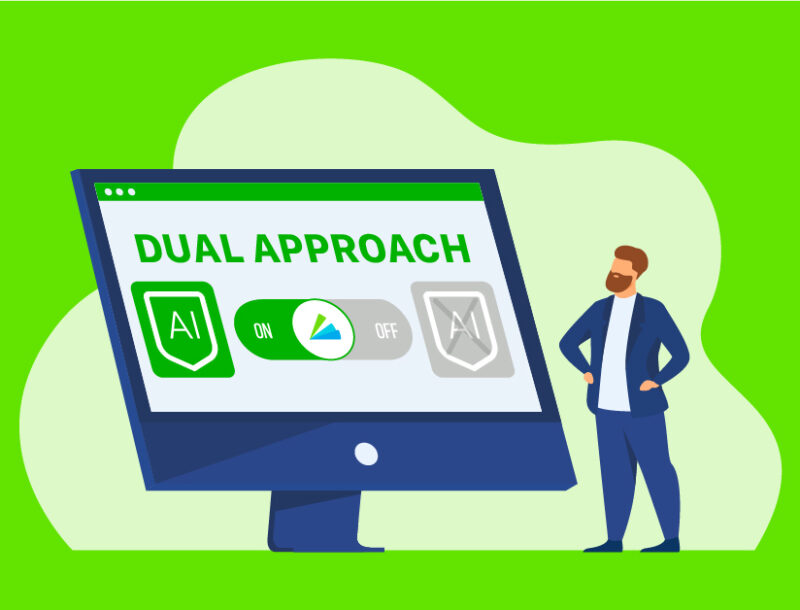Episode 14: BNPL Market Trends and Consumer Impacts Pt.1

Episode Description:
Our COMPLY Podcast episode this week revolves around the current state of the buy now, pay later industry. The conversation features Alan Kaplinsky, Senior Counsel at Ballard Spahr, Lisa Lanham, Partner at Ballard Spahr, and John Zanzarella, SVP at PerformLine.
In addition to discussing where this industry stands today, they also discuss the possible future of this industry over the next few years given the current headwinds it faces – which include a decrease in consumer spending, rising inflation and existing loan quality and cost of funding becoming constrained as interest rates continue to rise
Show Notes:
- The Buy Now, Pay Later Compliance Checklist: https://bit.ly/3EWze5e
- Top 5 Buy Now, Pay Later Compliance Issues Across Merchant Sites: https://bit.ly/3B40P37
- The Buy Now Pay Later International Regulation Map: https://bit.ly/3VncMZS
- Follow Alan: https://www.linkedin.com/in/alankaplinsky/
- Follow Lisa: https://www.linkedin.com/in/lisamlanham/
- Follow John: https://www.linkedin.com/in/johnzanzarella/
- Follow Ashley (AC): https://www.linkedin.com/in/ashley-cianci
Subscribe to COMPLY: The Marketing Compliance Podcast
About COMPLY: The Marketing Compliance Podcast
The state of marketing compliance and regulation is evolving faster than ever, especially for those in the consumer finance space. On the COMPLY podcast, we sit down with the biggest names in marketing, compliance, regulations, and innovation as they share their playbooks to help you take your compliance practice to the next level.
Episode Transcript:
Ashley:
Hey there COMPLY podcast listeners! Our episode this week revolves around the current state of the buy now, pay later industry. The conversation features Alan Kaplinsky, Senior Counsel at Ballard Spahr, Lisa Lanham, Partner at Ballard Spahr, and John Zanzarella, SVP at PerformLine. In addition to discussing where this industry stands today, they also discuss the possible future of this industry over the next few years given the current headwinds it faces – which include a decrease in consumer spending, rising inflation and existing loan quality and cost of funding becoming constrained as interest rates continue to rise.
Thanks for listening and enjoy the show!
John:
Hey, everyone, and welcome. My name is John Zanzarella. I’m the SVP of Sales here at PerformLine, and we’re really excited to have this group together today to talk about buy now, pay later market trends, and consumer impacts. And you’re gonna have a chance to hear from two absolute experts in this space. I’m gonna have them introduce themselves, but Lisa, why don’t you start?
Lisa:
Absolutely happy to meet you guys. So I’m Lisa Lisa Lanham, I’m a new regulatory partner in the Consumer Financial Services Group at Ballard Spahr. I also co-lead the FinTech and payment solutions team. So I joined in March 2022 with a an of-council in our DC office and two nonlawyer licensing specialists. I, as a team, we tend to advise on the federal approvals and state licenses that you need for regulated industry, including buy now, pay later and, you know, all the substantive regulatory compliance issues that go along with those approvals and licenses. And a lot, I could go on for an hour about it, but, you know, it’s just, we leverage our relationships with regulators to council clients on obtaining and maintaining licenses, and also with navigating some sticky, you know, regulatory spaces and new product lines. So Alan,
John:
And we know now those services are, are more important than ever with the regulatory landscape that we’re gonna dive into today. So thank you for being here, Lisa, and, and Alan, welcome. Why don’t you introduce yourself?
Alan:
Thank you. Thank you, John. And welcome to anybody who’s listening to the program today. So I’m Alan Kaplinsky and I’m Senior Council at Ballard Spa. For 25 years, I was the chair of our Consumer Financial Services group, gave that up about two years ago. As the name of our group suggests, we focus only on consumer financial services. That is, we cover the landscape. We cover all types of products. We are very heavily involved in FinTech as Lisa mentioned to you and more specifically in buy Now, paid later where several of the lawyers in our group do that type of work. We do the regulatory work, we do government enforcement work, unfortunately never like it when clients get ensnared in nasty investigations and litigations and, and litigation involving the CFPB or the FTC or State Attorneys General.
Alan:
And we also do a lot of work in the supervisory area that is for clients who are supervised by the CFPB or state banking departments. And basically any type of regulator we help them navigate, our clients, navigate their way through it. So that’s what I have. And the only other thing I should mention is we have a blog that if you’re not signed up for you really want to sign up for it. We’re very proud of our blog. We launched it in 2011 when the CFPB got stood up. It’s called consumerfinancemonitor.com. And about four and a half years ago, we launched our what I call our companion podcast show. It’s a weekly show. We release a new show every Thursday. We’ve done a number of shows already on Buy Now, pay later. We archive all our shows. If you go on our Ball Spar website and look under Consumer Financial Services group you’ll find access to our blog and our podcast show. And we’re on all the regular platforms. So again, a pleasure to be here. John, going back to you.
John:
Yeah, thanks so much, Alan. And it is worth noting, like he said you know, PerformLine, we’re a software company that offers sales and marketing compliance for consumer finance companies. So we work with a lot of, by now, pay later providers. But we always talk about, you know, the answers to some of your compliance challenges are a combination of human plus technology. And the team at Ballard Spahr does such a great job on the human side of it, providing insights and expertise on the ever-changing regulatory landscape. So when it comes to buy now, pay later, let’s just set the stage for a minute. In September of this year, the CFPB issued a report, “Buy Now, Pay Later: Market Trends and Consumer Impacts.” Before we dig into that report, I think it’s important to note the current state of the industry. We saw rapid growth right from 2019 to 2021 through the pandemic, loans originated in this space by the top five companies grew by 970%, but now we see a lot of those companies are facing headwinds from various directions. Consumer spending is down, inflation is up, existing loan quality and cost of funding will be constrained as interest rates continue to rise. I think the question we’d like to start with today is with all of that information in such a large swing from 2019 to present day, what do you think the future of this industry will look like, you know, next year and then maybe beyond that, look, five years down the road. Lisa, you can start, or Alan up to you.
Lisa:
I was gonna say, Alan, why don’t you go first?
Alan:
Oh, oh, okay, sure. So you know, when you go to law school, they don’t really tell you how to soothsay, you know, how to predict the future, but I’ll do the best that I can. I guess I’m a, you say I’m an amateur economist as well after you hear me, but in the short term unfortunately, I hate to say it cuz I know a lot of people in our audience are in the industry. I don’t see a tremendous amount of improvement in the factors that you already mentioned, John. In the next year you know, we still are not out of the woods. Jerome Powell is absolutely intent on getting inflation down to no more than 2%, come hell or high water. And you know, he keeps jacking up rates every time they meet.
Alan:
The only good month we had, I think, was the month of August when they didn’t meet. And we, we were given a little bit of a breather, but I think the the industry is gonna remain under stress. But from a regulatory standpoint I’m all the things that Rohit Chopra complained about in the report, I know we’ll get into that in a few minutes, in a lot more detail. Most of the, what he complained about, he can only accomplish through regulations, if he does it right. I should add that. And regulations take a long period of time, any kind of regulation of the things that I think he might be interested in doing, which we’ll get into detail on. And so within the next year, I don’t see a tremendous amount happening at the CFPB.
Alan:
They’ve got a very big full plate right now where they’re doing rule making regarding open banking, that small business business lending. And plus later on top of that, the fact that the United States Court of Appeals for the Fifth Circuit recently held that their source of funding, namely from the Federal Reserve Banks, that that’s unconstitutional. And so now there’s this huge cloud hanging over the CFPB as to whether or not it’s constitutionally funded. And if it’s not, what’s the result of that going to be? That is gonna take up a lot of bandwidth because there is gonna be fights going on in the Supreme Court and there’s gonna be things going on in Congress at some point and is a bloody mess. So anyway, I think the short term not a lot, five years depends how long Chopra is in office. He’s got two more years, basically the end of Joe Biden’s term, if a Democrat gets elected look out. And by my saying that I’m not telling you what my politics are, just what I think is gonna happen, I think yeah, within a five year time span, plenty of time to issue regulations I think that will happen. And we’ll get into some of the things later that I think he will regulate. Lisa.
Lisa:
Yeah, and I, so I’m sort of our resident state person, right? So I, I look at things from the state angle and with everything that’s going on with the CFPB with the Fifth Circuit decision, honestly, I think you’re gonna see some more aggressive states. I mean, you saw it with the Trump administration, right? When people thought that there was no, there wasn’t gonna be any more teeth to the CFPB, right? The states came in and you see the California regulator reorganizing as the first mini CFPB and you as the DFPI. So I think you’re gonna, I think on the state level, the next one to five years look very active, right? So the BNPL market might slow down with a decrease in consumer spending because of high inflation, increased cost per living, existing long quality interest rates, whatever.
Lisa:
But, you know, those reasons are also reasons why state regulators grow more concerned with alternative credit products like BNPL. So it seems to me that just from doing what I’ve been doing, the CFPB and state regulators both sort of have this understanding that the modern consumer is unsophisticated and easily hoodwinked, right? So from their perspectives consumers aren’t really financially literate enough to determine on their own whether or not utilizing something like a BNPL product is a smart choice financially. So over the next one to five years on the state level, I really expect to see more stringent requirements placed on providers of alternative credit products to safeguard consumers. And on truthfully, a lot of what we see too, cause Alan, you’ve got a great point. Regulations and statutes, new legislation, it takes a lot of time, but the states have existing frameworks for them, they, that they can work within already.
Lisa:
We’ve got sales finance company licensing, we’ve got license lender licensing, we’ve got substantive regulatory require compliance obligations that already go along with that, right? So they can, they can regulate this market without actually doing anything new by enacting new regulations or new legislation. So I think there’ll be efforts that way, you know, so they might try to safeguard consumers through new licensing or substantive regulatory compliance requirements. But they might also just reassess existing requirements. I think state-enacted ATR requirements for these products are on the horizon as well. And we’ve been seeing a trend in that direction for some time now, even before the CFPB’s inquiry, which, you know, we’ll get into a bit more I’m sure later on in the discussion. But, you know, my PSA here, for what it’s worth, I would also love to see states better serve consumers by providing financial literacy classes regarding a lot of these alternative credit products versus just stringently regulating BNPL providers. But I don’t know that that’s the reality of what’s coming down the pike. It’s just something that I personally think would be be great for consumers. Cause these products do have a place.
Alan:
Yeah, the, the only thing I would add is a factor over the next five years I think there will be more of a movement away from the merchant discount model and a movement toward the proprietary app driven model of buy now pay later companies. It seems to me inevitable that that will happen for a whole bunch of reasons that are identified in the report, which I’m sure we’ll delve into.
John:
Yeah, and you know what, for the audience, we just covered information there. That could be its own podcast in and of itself. And so that’s why it’s important to make sure that you’re following up with Lisa and Alan and whoever in your network helps advise you on some of these situations. I think at PerformLine, you know, we see it, even though there are strong headwinds now, we saw some of that with mortgage in ’07 and ’08 and that bounce back really strong. There’s gonna be some iterations of buy now, pay later, some opportunities to evolve the product offering to evolve the marketing to consumers. But you’re not really gonna be able to do any of that effectively if you’re not taking a proactive approach to compliance.
John:
And so three things that Alan and Lisa just talked about. Number one, the CFPB has got a full plate, and so if you are listening today and you’re a bank that offers buy now pay later, along with embedded finance and other consumer facing products, it’s hard to figure out, you know, what to prioritize from that aspect. There is the, the Fifth Circuit appeal that’s going on right now, what does that have in store for the future and how does that affect the CFPB and your business? And then last, like Lisa talked about, I mean, I’m always surprised when we talk to our customers how much, how much more active some of the, the state level attorney generals are with regards to communicating with these businesses and understanding not just how they’re marketing these products, but how they’re monitoring how these products are being marketed. When you’re talking about third parties like merchants digitally, in-store, there’s a lot of layers to it.
Ashley:
Thanks for listening to this episode of the COMPLY podcast! If you couldn’t tell, there is a lot more discussion to be had between these three so be sure to tune in next time to hear part two of this conversation where they dig into the consumer impacts of the buy now, pay later industry.
As John mentioned in our podcast, there are likely going to be several iterations the buy now, pay later product offering, but you’re not going to be as effective if you’re not being proactive in compliance. PerformLine has been and will continue to be diligent in our understanding of this space as it pertains to monitoring and compliance. We have a few content pieces that I’ll link in today’s show notes including a Buy Now, Pay Later Compliance Checklist and an International Regulation Map for Buy Now, Pay Later Lenders.
For that and the other content mentioned during today’s episode, be sure to check out today’s show notes and as always for the latest content on all things marketing compliance you can head to performline.com/resources.
Thanks again for listening and we’ll see you next time!


